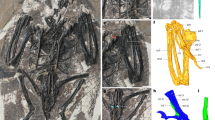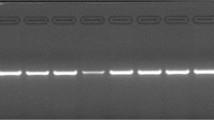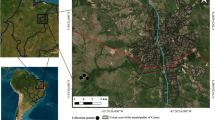Abstract
IT recently became necessary for me to examine some of the Dendrocolaptine birds in this museum, and among them the species named above. Our specimen, the type of the genus Deitdrexetastes founded by Eyton in 1851, in Jardine's “Contributions to Ornithology,” on a skin from an unknown locality, formerly in Lord Derby's museum, has evidently been examined by Dr. Sclater, for its label bears, in the well-known calligraphics of that distinguished authority on this group, the name Dendrexetastes temmincki. The difficulty I have in ascribing our specimen to that species is the cause of this note. According to the fifteenth volume of the “British Museum Catalogue of Birds,” by Dr. P. L. Sclater, the genus contains but two species, D. temmincki and D. devillii, which, by his key on p. 140, are distinguished from each other, the former by having “blackish cross-bands” on the belly, and the latter having that region “uniform brown.” On consulting Eyton's original description in the “Contributions to Ornithology,” I can find no mention of any cross-bands on the belly; for there are none on the skin, which is apparently that of a mature bird. In looking up next the description by Lafresnaye, in the “Revue de Zoologie” for 1851, of his D. temminckii, to which Dr. Sclater has relegated as a synonym Eyton's D. capitoides, I read:—“… pectoris ventrisque plumis totis umbrinis, in medio maculâ triangulari-elongata nivea nigro marginata notatis; ventris maculis strictis; fere linearibus; subcaudalibus pallide rufescentibus, albo late, fuscoque anguste vittatis …” These words, as I interpret them, make no mention of the presence of cross-bands on the belly of D. temmincki, while the latter half of the quotation, in regard to the under-tail-coverts being pale rufous, with broad white and narrow fuscous spots, does not apply to D. capitoides, for the type-skin before me presents no such characters. The plate illustrating Lafresnaye's description of the first-mentioned bird (loc. sup. cit.) shows its breast-spots to be much narrower, though not linear, and shorter than those in D. capitoides, while the spots on the feathers on the upper part of the belly can hardly be termed “fere linearibus,” which they are, however, in D. capitoides. The lower belly in the plate, “plumis totis umbrinis,” shows, just as in the last-mentioned species, not a single cross-band. It would appear to me, therefore, that D. capitoides, Eyton, can scarcely be = D. temmincki, Lafr., while the latter differs from D. devillii (of which I regret our museum does not possess a specimen), and, I take it, from D. capitoides, by its smaller and narrower throat-spots. The subcaudal characters separate D. capitoides from D. temmincki, and apparently the typical D. devillii is separated from it also by the “striis strictissimis“ of the breast, and the very linear shaftstripes of the upper neck feathers. Is D. capitoides = D. devillii? Or are there three species? I incline to the opinion that there are.
This is a preview of subscription content, access via your institution
Access options
Subscribe to this journal
Receive 51 print issues and online access
$199.00 per year
only $3.90 per issue
Buy this article
- Purchase on SpringerLink
- Instant access to full article PDF
Prices may be subject to local taxes which are calculated during checkout
Similar content being viewed by others
Author information
Authors and Affiliations
Rights and permissions
About this article
Cite this article
FORBES, H. Note on the Dendrocolaptine Species, “Dendrexetastes capitoides” of Eyton. Nature 52, 619 (1895). https://doi.org/10.1038/052619a0
Issue date:
DOI: https://doi.org/10.1038/052619a0



